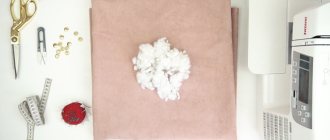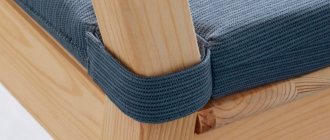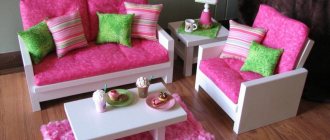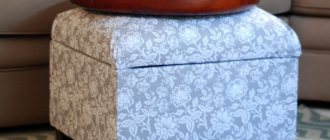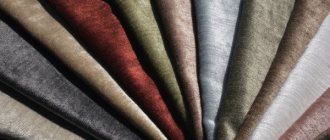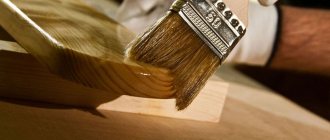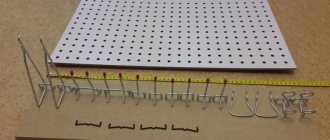Patterns of bedspreads made from old jeans
A blanket made from denim scraps can be created using the patchwork technique, which is difficult not only in execution, but also in layering. It is permissible to sew a bedspread without adding rounded parts of different shades inside, since this will not affect the beauty of the final product.
The style of the canvas will be changed by the material selected for the back inserts.
A blanket made from denim shreds will be a wonderful and cozy addition to the interior.
There are several blanket models:
- "On the grid." A very simple and unusual model is obtained by accurately distributing square fragments with a bright grid. Its shade can be light, colored, bluish and black. Thanks to these color shades, the type of canvas is determined.
- Brutal. A blanket made of squares looks rough, but original. To decorate the blanket, you can use a piece of light thread tied in a knot in the middle of each square, which can be purchased at sewing accessories departments.
- Massive. Star patterns based on brown velvet or leather are suitable for creating a dark and large headboard.
- Wicker. Woven fabrics made from denim look very romantic and cute.
- Country style. Denim combined with printed squares in other colors allows you to add a distinctive rustic feel to your room.
- Romantic. Shirt fabric in a light or bluish shade goes well with rough jeans. Such a tandem, knitted around the perimeter with lace, will make the final product optimal in terms of color shade.
- With 3D effect. A canvas in 3D style can be created by spending a little time on sketches, selecting the shade of the material and placing fragments from dark to light colors.
- Stylish. A quite fashionable model can be made by a composition of fabrics with light palettes, with “inscription” prints or silky products.
Techniques for stitching flaps
It is recommended to make a blanket from denim scraps yourself only after training on light types of fabrics.
To do this, you will need to sew a blanket from square-shaped scraps of different shades, connecting them together with a machine stitch. The front part is made of shreds, and the back part consists of a lining of one large piece of fabric.
You can use unnecessary curtains, tablecloth or bed linen. Despite the wide variety, the most popular stitching methods can be identified: squares, watercolors, stripes or patchwork.
Stripes
Sewing with stripes is the simplest and allows you to quickly make a bedspread with an ornament or pattern.
It is possible to sew the fabric, forming it from scraps, according to the following instructions:
- Sew the flaps back to each other in stripes. Leave the remaining seam up to 1.5 cm wide on the front area.
- Form strips - 10, 15, 20 pcs. by parameters.
- Sew the strips together and stitch the lining at the bottom.
- On the front area at the seams, make a fringe using scissors.
To make a seam with fringe, the fabric will need to be cut along its length, moving 5 mm away from the seam. Pull out the transverse threads with a brush or your hands, and then fluff the edges of the fringe. In the case of making fabric without fringe, the blanks are sewn in strips so that the seams are hidden from the inside.
There is an additional method for stitching with stripes, which involves making a pattern. Strips of material look unusual in the form of logs, zigzags, diamonds, and fir trees. To begin with, prepare a sketch, according to which the stripes are created, and a blanket is made from them according to the intended pattern.
Patchwork
Very often, when interacting with textile materials, handmade craftsmen turn to the patchwork technique, since old jeans can be used to make a blanket based on rounded parts. This may require up to 5 pairs of trousers, a CD and a set of sewing tools.
A master class on making canvas using the patchwork technique is described below:
- When the material is prepared, apply circles to the surface of the material on the underside using a CD and a pencil.
- Draw an odd number of fragments along the contours and display a geometric figure in each.
- Along the folds, sew all the flaps together so that the stitching is even.
- Sew all marked seams, steam the circle allowances or smooth them with an iron.
- Sew the allowances with a zigzag into the inside of the rounded flaps, stitch the fabric, edge it or sew on the lining.
To create a bright product, multi-colored square-shaped scraps of any fabric or insulating material can be placed in the circles before zigzag stitching. The design is based on the accumulation of a large number of denim details, the edges of which are stitched and then decorated.
If you don’t have a lot of jeans, you can use any denim items or alternately use scraps with inserts and other material. The thinner the material, the easier it is to process and create stitches.
Watercolor
The originality of this technique is based on the fact that the fusion of denim bases is based on their combination in a set sequence, taking into account the color scheme of the material.
Initially, the plaid is created from light-colored material, placing them in the central part, and squares of dark shades are added closer to the ends. You can also do the opposite - dark middle, light ends.
The features of sewing a blanket are described in the following steps:
- Select the fragments of the flaps so that their colors smoothly intersect with each other.
- Alternating from light to dark and vice versa can be done to the center or in a spiral.
- The most important task is to create a visual effect when applying a color palette.
This work requires a lot of time and patience, since the technique is complex in selecting a color shade from a certain number of rags. The result will be a blanket that looks original with furniture upholstery, and will also improve your watercolor stitching skills.
Quick squares
The square stitching method is suitable for less experienced craftsmen. It is necessary to master the design of three-color squares from several pairs of trousers of different shades.
Also cut out 2 rectangular flaps from 2 different materials and stitch them along their entire length. The resulting seams on the wrong side are smoothed out and steamed. The third blank is made from fabric of another color range in the form of a rectangle identical to the width of the strip of 1 and 2 geometric shapes.
All prepared materials are sewn on the outer areas so that the sleeve comes out. You can cut out three-color squares from the resulting product, and also use blocks to sew the bedspread together.
Products made from scraps have always been in great demand, especially today at the peak of the popularity of handmade things. This textile will help decorate absolutely any room. Despite all the difficulties of tailoring, the finished product will turn out to be very unusual and exclusive.
How to sew it yourself
Our selection of patchwork ideas will give you ideas for creating items from pieces of old, worn jeans.
Patchwork sewing a denim rug
For such a rug you will need rectangular pieces of denim of different colors and different sizes.
- Think about the order in which all the pieces you have are arranged, laying them out on the floor in the shape of a rectangle.
- Sew all the parts one by one.
- Hide all seams under strips of fabric, which you sew on top using an overlocker for home sewing.
- The underside of the rug can be hidden with a plain fabric of the same size by stitching them together, or all seams can be overlocked.
Patchwork sewing pillows from jeans
We offer two options for sofa cushions that can be sewn using a patchwork method from pieces of jeans of different shades.
Option 1
- For such a pillow, you need to make a diagram, which is then cut into templates.
- Using the templates, cut out all the parts, making a small seam allowance (about 1 cm).
- Sew all the details, starting from the center of the product.
- When the top fabric is ready, some details can be highlighted with decorative machine stitching on an overlocker.
- The lower part of the pillow can be plain or the same as the upper.
- Sew both parts of the pillow and fill it with filling (sintepon, padding polyester or hallofiber).
Option 2
For this pillow you will need many different denim pockets in different colors and shapes.
- Sew the pockets to the main fabric using an overlocker in a chaotic overlapping manner.
- Make both halves of the pillow this way.
- Sew them together with right sides facing each other.
- Turn it out through a small hole and stuff it tightly with any filler you have.
- You can sew a small zipper into the hole.
Patchwork sewing of denim cosmetic bags
To sew a cosmetic bag, in addition to pieces of denim, you will need fabric for interior decoration and a zipper.
- Use a diagram of a cosmetic bag from the Internet, as in the photo, or create your own drawing.
- Think over a patchwork pattern and make paper templates using the basic pattern.
- Cut the jeans according to the templates and sew all the parts according to the pattern.
- When all the details of the cosmetic bag are ready, sew them on a machine.
- Sew on a lining that is identical in shape to the cosmetic bag itself, using the same pattern.
- Sew in a zipper.
Here are examples of simple cosmetic bags made from denim scraps.
Patchwork sewing bags from jeans
A bag from scraps of denim fabric can be sewn using the same principle as a cosmetic bag.
- Think over all the details of the bag and make a diagram on paper or use a ready-made one from the Internet, as in the photo.
- Cut pieces of denim, from which you then form a solid fabric by sewing them on a machine.
- From the resulting fabric, cut out all the details of the bag according to the template and sew them.
- Using the same patterns, sew a lining from another (thinner fabric) fabric and sew it in.
- Lastly, zippers and handles are sewn in.
- Additionally, you can decorate the bag with embroidery, applique or decorative stitches and braid.
The photo shows an example of a simple summer shoulder bag made from square patches of jeans in different shades.
Patchwork sewing of a denim pouf
You can even sew a soft pouf from pieces of old jeans, which will become an original element of your interior.
- Make a template drawing of the upper and lower round parts of the pouf, using the pouf in the photo as a model.
- Cut out all the parts of the design from pieces of jeans of different shades and sew them together.
- Decorate the top of the pouf with colored decorative stitching. You can use an overlocker or do it by hand.
- Sew the side part from rectangular pieces.
- Sew the top of the pouf to the side first, and then the bottom.
- Stuff the piece with foam crumbs and sew the hole closed by hand (or sew in a small zipper).
Patchwork sewing of furniture upholstery from jeans
You can use a few pairs of old jeans to reupholster your old furniture.
- Carefully rip apart the old sofa's upholstery at the seams.
- Using this as a template, cut the jeans using the largest pieces.
- Sew all the details of each part of the upholstery.
- Reupholster the sofa using round metal nails or a staple gun.
Patchwork sewing toys from jeans
Soft toys like this denim dog in the photo are one of the trends in interior design and look very stylish and bright.
- Find a ready-made pattern of a toy you like on the Internet and transfer it to scale onto paper. It is ideal to use graph paper for drawings. The photo shows an example of a simple dachshund pattern.
- Using the diagram, cut pieces of jeans and sew them into a single fabric.
- When all the parts of the toy are ready, sew them together with the right sides facing inward.
- Turn the toy inside out and stuff it with stuffing. For the toy, you can use finely cut foam rubber.
The photo shows another example of a toy sewn from small pieces of old jeans.
Patchwork sewing of a jeans skirt
Using old jeans and multi-colored pieces of checkered wool fabric, you can sew an original country-style skirt.
- From old jeans, leave the top part (about 15-18 cm) and pockets for the yoke, and cut off the rest and cut into any shape.
- Take measurements of the hip volume and length of the product, make a simple schematic drawing of an A-line skirt.
- Using the diagram, sew all the prepared scraps of fabric in any order, forming a skirt with oblique asymmetrical edges.
- Particularly loose fabrics can be processed using an overlocker.
Required Tools
A blanket made from denim scraps is an excellent solution for the home, which you can make yourself. To create one canvas you will need several pairs of denim trousers or other denim clothing. Due to the fact that the products are worn, they must be washed and dried.
When making a large blanket, you will need a lot of denim, which should be the same in composition and density. When using cotton inserts, it is recommended to cut the required number of fabric strips before sewing, leaving allowances for stitching.
It is also permissible to control the cutting by laying out the parts according to the drawing and viewing the general image of the canvas. A preview is required to establish how many flaps are missing.
To work, you need to prepare the following tools:
| What you need | Nuances |
| Old denim clothes | Frayed and yellowed fabric is not suitable for sewing, so it must be cut off. The material can be different in texture and shade, which will make the canvas more original. Since denim fabric is characterized by high strength, a blanket can be taken on a hike in the mountains, to the country house, or used to decorate the home interior. |
| Lining fabric | The reverse side of the blanket should be warm, durable and soft. For this, it is advisable to choose natural lining fabric, because it will come into contact with the skin. Wool is suitable for these purposes, but it is quite expensive. It can be replaced with special cotton wool or ordinary, but high-quality padding polyester. |
| Sewing machine | Since denim fabric is quite strong, you definitely need to purchase special feet that allow you to beautifully make a curly line. If you have no experience working with a sewing machine, it is advisable to initially practice on any unnecessary materials. |
| Threads with a needle | To work with denim, the needles must be strong enough, so when selecting a tool, it is advisable to consult with the seller. The shade of the threads must match the color of the material. To create an original product, you can use threads that will differ in shade. |
The auxiliary tools are:
- auxiliary materials and accessories for decoration;
- ruler with centimeter;
- manicure and tailor's scissors;
- stencil;
- laundry soap, a thin piece of chalk, a pen or pencil.
How to care for a denim blanket?
Making a blanket from pieces of fabric is quite labor-intensive work, so it would be a shame for any craftswoman to damage the product as a result of improper care. So, if it is used as a blanket for a sofa, it will require monthly washing and cleaning of dirt as needed. It is worth noting that a product made of denim is suitable for pet lovers, because you can quickly remove hair from it, and it is not so easy to tear it with claws or teeth.
It is important to adhere to the following care recommendations:
- small traces of dirt can be wiped off using a regular dishwashing sponge, after wetting it;
- The product must be washed every month using regular powder;
- products that combine denim with delicate fabrics can only be washed by hand with a mild detergent;
- You can dry the blanket after washing by hanging it on the dryer or in a horizontal position.
In order to make a blanket from pieces of denim with your own hands, you do not need to have any experience working with similar products. There are a large number of fairly simple schemes that anyone can handle
Of course, it is important to know how to use a sewing machine - after all, all the lines must turn out perfectly even. Accuracy, patience and a little imagination, and then the blanket will turn out beautiful and you will use it with pleasure!
Uncover
You can sew a blanket from denim scraps using a variety of cutting patterns. The result will be a product of different parameters, design and shape. To quickly progress the work, you will need to prepare preparations in advance. Their number and type directly depend on the style of the bedspread.
You can cut in squares, hexagons, stripes
Bedspread cutting samples can be of the following options:
- square and fringed using patchwork technique, from 350 elements with parameters 15x15 cm;
- from 252 square fragments with parameters 12x12 cm;
- from square elements 12x12 cm and 120 strips 2.5x12, 2.5x14.5, 2x14.5, 2x16.5 cm.
- from areas with motifs, using 20x20 cm squares of 2 color shades.
You can come up with a model yourself or use ready-made ideas. This type of needlework refers to a creative handmade technique. Canvases with a mosaic layout of denim patches with fluffy fringe look impressive.
Pros of denim
Denim is often used in patchwork because... has a large number of advantages over other fabrics:
- high strength and wear resistance;
- due to the large percentage of cotton in the composition, the fabric has breathable properties;
- not electrified;
- hypoallergenic.
Strength and durability
An additional advantage is that the fabric does not fray during operation, does not stretch or shrink. Denim patchwork is ideal for bedspreads, pillows, toys, etc.
Sewing instructions
Making a denim blanket from old fabric is considered a very painstaking job. To ensure that the final result does not disappoint, you must adhere to a certain sequence of actions.
Cutting patchwork blanks
A blanket made from denim scraps can be quickly sewn if you use a prepared stencil measuring 17x17. It will allow you to cut pieces of fabric more evenly.
It is best to cut using pre-prepared patterns
To do this you need to do the following:
- Attach the stencil to the fabric material.
- Using a pen, chalk or laundry soap, trace a pattern on the material.
- Cut the flap along the intended contour using sharp scissors.
When applying the pattern to denim, you must pay attention to the fact that the first side of the figure corresponds to the movement of the longitudinal thread, and the second - to the transverse thread. If this action is not performed, the blanket may tear after washing.
It is recommended to mark areas for stitching.
You will need to do the following manipulations:
- Apply a corner stencil to the corner of each flap from the front area.
- Insert a square blank with smaller parameters into the corner stencil.
- Remove the corner, outline the geometric figure on a light-colored fabric with a pencil, and on a dark-colored fabric with soap.
Assembling the bedspread
Due to the fact that it is very difficult to immediately distribute the shade of a large number of old denim products, it is recommended to place the image of the future bedspread on the floor surface. It is advisable to number all the squares so that during subsequent manipulations you do not make a mistake in their order.
Considering the number of squares of all shades, you can simulate the pattern of the blanket on the computer. Then it can be laid out according to a given pattern.
Stitching parts
Upon completion of assembling the bedspread, you can proceed to the stage of stitching the parts.
To do this you need to do the following:
- To obtain patchwork stripes, initially design the first row, then all the rest.
- When focusing on the outline of the element, fold, baste with thread and stitch.
- Thoroughly steam the prepared parts and straighten the ends of the squares in different directions.
- Stitch adjacent strips together.
Finishing of the finished canvas
To finish the resulting fabric, it is recommended to adhere to the following sewing instructions:
- Using a sewing machine, run a zigzag or even stitch along the lines of stitching the flaps.
- Stepping back 1 cm from the edge, run the sewing machine along each side of the sewn fabric.
- Regarding the side, remove the lobe threads and leave the transverse ones, or vice versa, spreading the ends of the squares that protrude.
- Decorate the entire perimeter of the bedspread with fringe.
Features and rules of sewing
Features and rules for sewing bedspreads from old denim materials:
- to sew denim material, you must use thick and strong needles;
- if there are damaged elements on the material, they must be cut off;
- It is recommended to carefully open the back pockets so that they can be used to decorate the sewn model;
The blanket should be ironed at the seams
- there is no need to completely wash and iron the old denim fabric; you can initially cut off the necessary elements and carry out these actions on them;
- since very old denim can crumble during the work stage, it is recommended to sew it together in larger pieces;
- it is allowed to use a combination of fabrics of different shades, but the density of each fabric must be the same;
- The parts of the trousers that have become frayed are not suitable for use, so they should be cut off and discarded.
Old jeans are an inexhaustible source of creativity. Experienced craftsmen can make original blankets from scraps of fabric using complex sewing techniques.
By experimenting with finishing, texture and geometric shapes, you can make a beautiful model using the patchwork technique, which will add charm to the interior.



